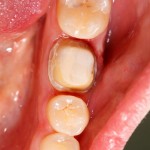
Gingival retraction is primarily used to facilitate accurate impression taking for fixed restorations in close proximity to the gingiva. Retraction assists the identification of finish lines for restoration to improve marginal fit. A range of retraction techniques are available alone or in combination, mechanical, chemical and surgical.
The aim of this systematic review was to assess the gingival retraction methods in terms of the amount of gingival retraction achieved and changes observed in various clinical parameters: gingival index (GI), plaque index (PI), probing depth (PD), and attachment loss (AL).
Methods
Searches were conducted in the Medline, CINHAL Plus and Cochrane databases. In vivo clinical experimental studies, randomised controlled trials (RCTs) and clinical trials examining gingival retraction achieved with retraction cords, pastes, surgery, cautery, or lasers and published in English were considered. Cochrane EPOC criteria were used to assess study quality. A narrative summary of the findings was presented.
Results
- 10 studies assessing a total of 400 teeth were included.
- All but one study was considered to be at high or unclear risk of bias
- Chemo-mechanical methods ( cords with astringents) were the most commonly reported
- 1 study reported on the use of a diode laser.
- 1 study reported on rotary curettage
- Amount of gingival retraction achieved for mechanical methods was in the range of 0.19 to 0.23 mm, whereas for chemo-mechanical methods a range of 0.02 to 0.46 mm was observed. For surgical methods the recorded range was 0.03 to 0.45 mm.
- Periodontal indices were not significantly affected with different retraction methods
Conclusions
The authors concluded:-
The most common method used for gingival retraction was chemo-mechanical. The results were heterogeneous with regards to the outcome variables. No method seemed to be significantly superior to the other in terms of gingival retraction achieved. Clinical parameters were not significantly affected by the gingival retraction method.
Comments
This review considered a broader range of gingival retraction techniques than an earlier review by Huang et al (Dental Elf -1st Oct 2015), which just compared corded and cordless systems. The Huang review searched a broader range of databases than this current review and included 7 studies, 4 of which were RCTs compared with this review which only identified 1 RCT. It is also interesting to note that this review did not identify the Huang review. However, from the findings of both reviews it can be seen that the available evidence is limited and further high quality studies are needed to determine the most effective gingival retraction techniques and their impact on gingival health.
Links
Primary paper
Tabassum S, Adnan S, Khan FR. Gingival Retraction Methods: A Systematic Review. J Prosthodont. 2016 Jul 28. doi: 10.1111/jopr.12522. [Epub ahead of print] PubMed PMID: 27465933.
Other references
Original review protocol on PROSPERO
Cochrane EPOC review resources
Dental Elf -1st Oct 2015

Gingival retraction methods and gingival health? https://t.co/kTCjjzg098
[…] post Gingival retraction methods and their impact on gingival health? appeared first on National […]
Gingival retraction methods and their impact on gingival health? https://t.co/kTCjjzg098
Limited evidence for impact of gingival retraction methods on periodontal health https://t.co/kTCjjzg098
Gingival retraction: no method superior but evidence is limited https://t.co/kTCjjzg098
Little difference in gingival retraction achieved with available methods https://t.co/kTCjjzg098
Don’t miss- Gingival retraction methods and their impact on gingival health? https://t.co/kTCjjzg098